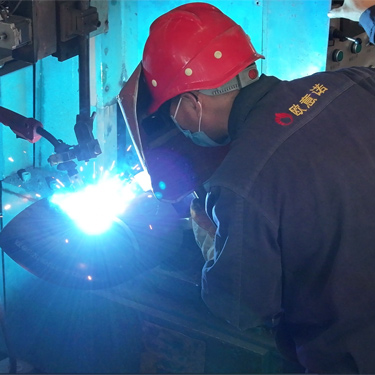
Nov . 20, 2024 05:09
Back to list
pneumatic valve
Understanding Pneumatic Valves The Backbone of Automated Systems
Pneumatic valves play a pivotal role in industrial automation and control systems, enabling the regulation of air pressure and flow to actuate machinery and equipment effectively. These valves are crucial components in pneumatic systems, which utilize compressed air as a power source. In this article, we will explore the types, functions, and applications of pneumatic valves, highlighting their significance in various industries.
At its core, a pneumatic valve controls the direction, pressure, and flow of compressed air in a system. There are several types of pneumatic valves, each designed for specific functions. The most common types include
1. Directional Control Valves These valves determine the path of the compressed air, allowing it to flow in different directions. They can be classified into 2-way, 3-way, and 4-way valves, depending on the number of ports and the complexity of the application.
2. Pressure Control Valves These are used to maintain a specific pressure within the pneumatic system. They can either relieve excess pressure or regulate pressure levels, ensuring optimal performance and safety.
pneumatic valve

3. Flow Control Valves These valves regulate the speed of the actuators by controlling the flow rate of the compressed air. By adjusting the flow, they impact the operational speed of cylinders and other devices in the system.
The functionality of pneumatic valves is generally categorized into two main operations manual and automatic. Manual valves require human intervention to open or close, while automatic valves operate based on sensor inputs or predetermined control signals. This automation enhances efficiency and precision in various applications, reducing the risk of human error.
Pneumatic valves find extensive applications across multiple industries, including manufacturing, automotive, pharmaceuticals, and food processing. In manufacturing, they are essential for operating machinery on assembly lines, controlling the deployment of robots, and managing quality control processes. In the automotive sector, pneumatic valves manage the functioning of air brakes, suspension systems, and pneumatic actuators that control various aspects of vehicle performance.
Furthermore, in the pharmaceutical and food processing industries, pneumatic valves ensure hygienic conditions by controlling the flow of air in cleanroom environments and protecting the quality of products during processing. Their ability to operate effectively under stringent safety and contamination regulations makes them indispensable in these sectors.
In conclusion, pneumatic valves are fundamental components in modern automation and industrial applications. Their diverse types and functionalities allow for the efficient control of compressed air, enhancing productivity and safety in various processes. As industries continue to evolve, the importance of pneumatic valves in streamlining operations and improving system reliability cannot be overstated. Understanding their mechanisms and applications will empower engineers and technicians to harness their full potential, driving innovation in automation technology.
Next:
Latest news
-
Safety Valve Spring-Loaded Design Overpressure ProtectionNewsJul.25,2025
-
Precision Voltage Regulator AC5 Accuracy Grade PerformanceNewsJul.25,2025
-
Natural Gas Pressure Regulating Skid Industrial Pipeline ApplicationsNewsJul.25,2025
-
Natural Gas Filter Stainless Steel Mesh Element DesignNewsJul.25,2025
-
Gas Pressure Regulator Valve Direct-Acting Spring-Loaded DesignNewsJul.25,2025
-
Decompression Equipment Multi-Stage Heat Exchange System DesignNewsJul.25,2025

